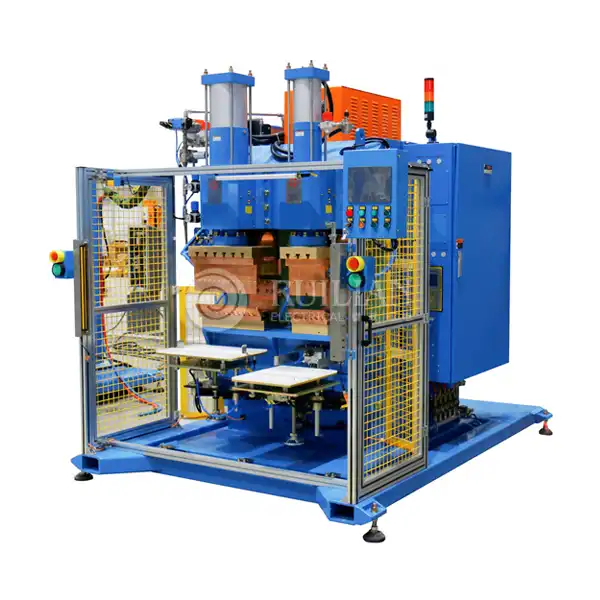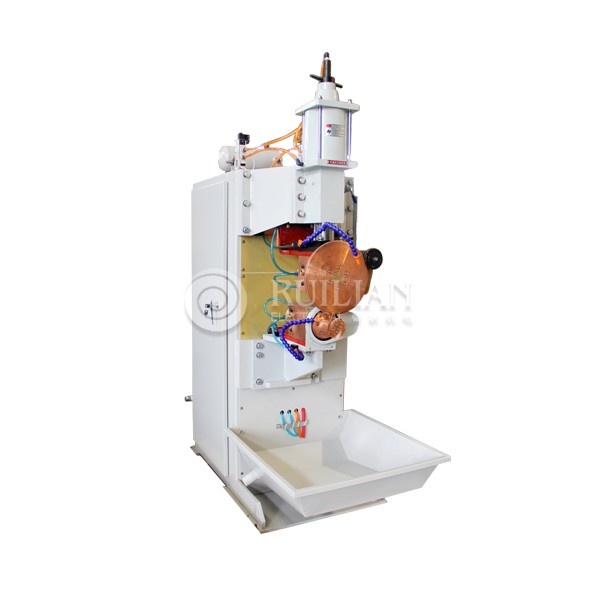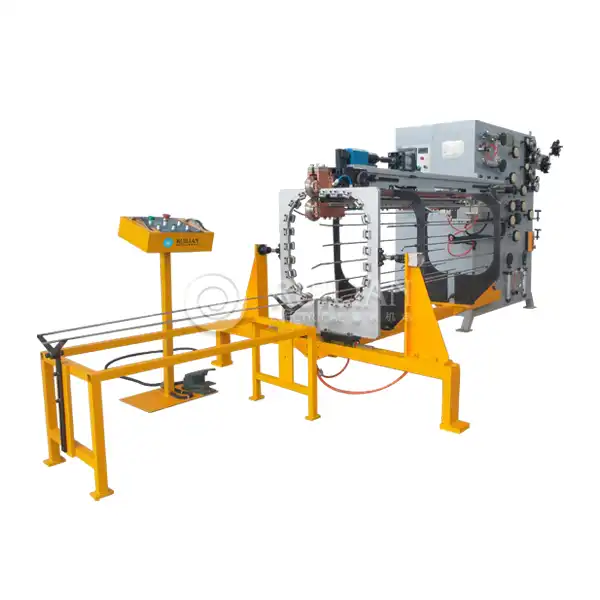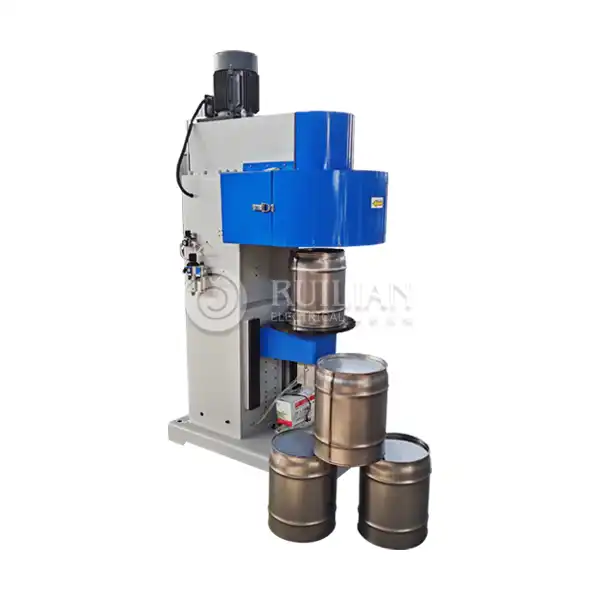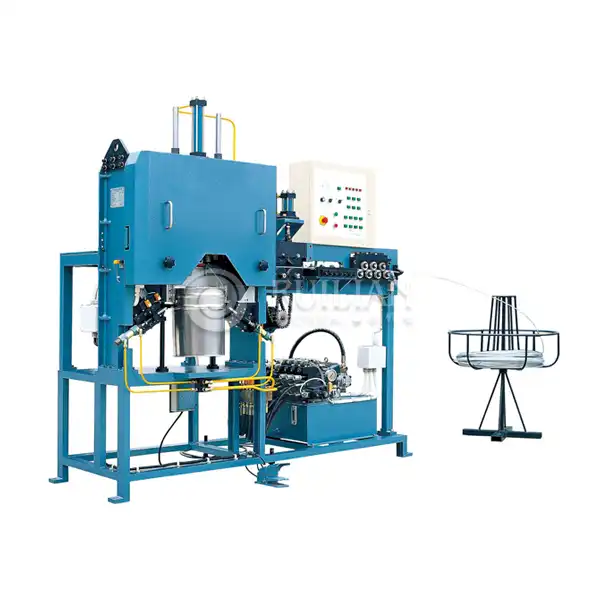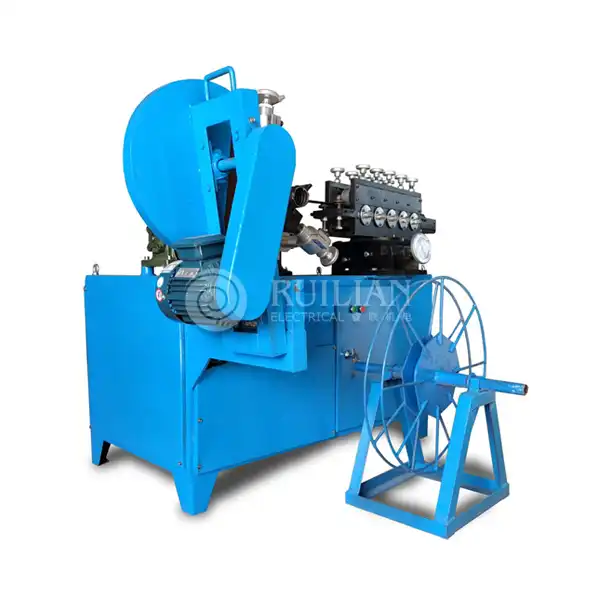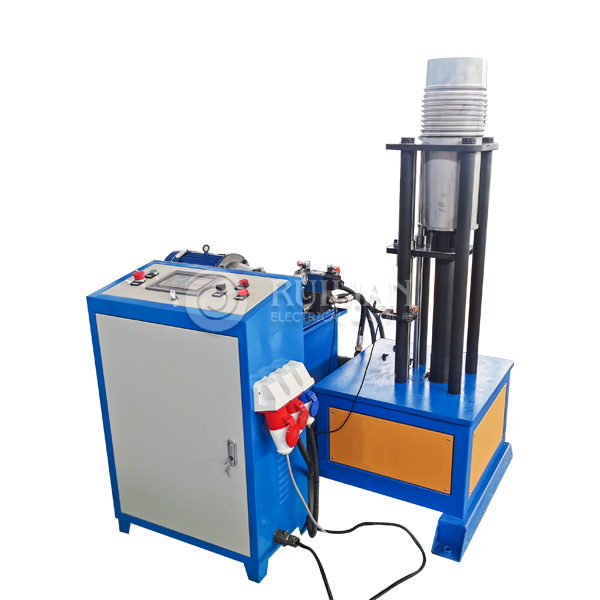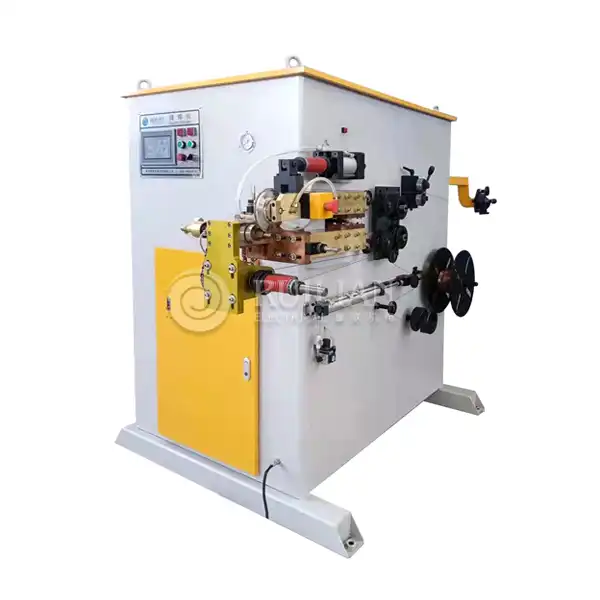What role does automation play in quality control during the welding process?
In the ever-evolving world of manufacturing, automation has become a crucial element in ensuring consistent quality and efficiency. This is particularly true in the welding industry, where precision and reliability are paramount. At RUILIAN, we understand the significance of automation in quality control during the welding process. Our Automatic Seam Welding Machine exemplifies how advanced technology can revolutionize welding operations. Let's delve into the pivotal role automation plays in maintaining and enhancing weld quality.
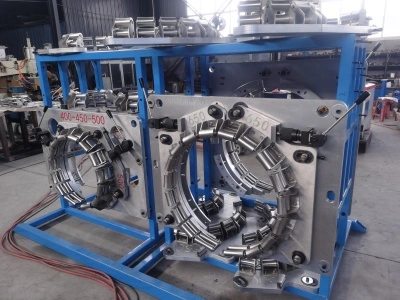
How does automation ensure consistent weld quality?
Precision in welding parameters
Automation in welding processes allows for precise control over critical parameters such as temperature, pressure, and speed. Unlike manual welding, where human factors can introduce variability, automated systems maintain consistent settings throughout the welding operation. This consistency is crucial for producing high-quality welds, especially in industries that demand stringent quality standards.
Our Automatic Seam Welding Machine utilizes advanced control systems to maintain optimal welding parameters. This ensures that every weld meets the required specifications, regardless of the duration of the welding operation or the complexity of the workpiece.
Real-time monitoring and adjustment
Another key aspect of automation in quality control is the ability to monitor the welding process in real-time. Sophisticated sensors and monitoring systems can detect even the slightest deviations from the preset parameters. When anomalies are detected, the automated system can make instant adjustments to maintain weld quality.
This real-time monitoring and adjustment capability is particularly beneficial in circumferential seam welding, where maintaining consistent quality around the entire circumference of a workpiece can be challenging. Our automated systems ensure that the weld quality remains uniform throughout the entire seam.
What are the benefits of automated quality control in welding?
Enhanced productivity and efficiency
Automated quality control significantly boosts productivity in welding operations. By eliminating the need for frequent manual inspections and adjustments, automated systems allow for continuous operation. This results in higher throughput and reduced production times. Moreover, automated systems can operate for extended periods without fatigue, unlike human operators. This consistent performance contributes to increased overall efficiency in welding operations. While high-end machines are often preferred for complex tasks, a cheap welding machine can still be highly effective for simpler, high-volume production lines, making it a cost-efficient option for many businesses. Our Automatic Seam Welding Machine is designed to maximize productivity while maintaining high-quality standards, whether for premium or budget-conscious production needs.
Cost reduction and resource optimization
While the initial investment in automated welding systems may be substantial, the long-term benefits in terms of cost reduction are significant. Automated quality control minimizes material waste by reducing the occurrence of defective welds. This not only saves on raw material costs but also reduces the time and resources spent on rework and repairs.
Furthermore, automation allows for optimal utilization of resources. With precise control over welding parameters, energy consumption can be optimized, leading to reduced operational costs. The efficiency of automated systems also means that fewer operators are required to oversee the welding process, allowing for better allocation of human resources.
How does automation reduce defects and errors in the welding process?
Elimination of human error
One of the most significant advantages of automation in welding is the elimination of human error. Manual welding, despite the skill of the operator, is susceptible to inconsistencies due to factors such as fatigue, distractions, or variations in technique. Automated systems, on the other hand, perform with unwavering consistency, significantly reducing the likelihood of defects caused by human error.
Our Automatic Seam Welding Machine exemplifies this benefit. By maintaining precise control over all welding parameters, it ensures that each weld is executed with the same level of accuracy and quality, regardless of the time of day or the duration of the operation.
Advanced defect detection capabilities
Automated welding systems often incorporate advanced defect detection technologies. These may include vision systems, ultrasonic testing, or other non-destructive testing methods integrated into the welding process. Such systems can identify defects in real-time, allowing for immediate corrective action.
This capability is particularly valuable in industries where weld integrity is critical, such as in the production of pressure vessels or in aerospace applications. By detecting and addressing defects as they occur, automated systems prevent the propagation of errors through the production line, ensuring that only high-quality products reach the end user.
At RUILIAN, we understand the importance of quality control in welding processes. Our automated welding solutions, including our Automatic Seam Welding Machine, are designed to leverage the power of automation to ensure consistent, high-quality welds. By incorporating advanced control systems, real-time monitoring, and defect detection capabilities, we help our clients achieve superior weld quality while optimizing their production processes.
Automation in welding quality control is not just about improving current processes; it's about setting new standards for precision and reliability in manufacturing. As technology continues to evolve, we at RUILIAN remain committed to incorporating the latest advancements in our welding solutions, ensuring that our clients stay at the forefront of manufacturing excellence.
If you're looking to enhance your welding operations with state-of-the-art automated solutions, we invite you to explore our range of welding equipment. From our versatile Automatic Seam Welding Machine to our specialized circumferential seam welding systems, we have the expertise and technology to meet your specific welding needs, including electric water heater manufacturing. To learn more about how our automated welding solutions can transform your manufacturing processes, please don't hesitate to contact us at ry@china-ruilian.cn or visit our website at www.rlseamwelding.com. Our team of experts is ready to provide you with tailored solutions that align with your quality control requirements and production goals.
References
1. Smith, J. (2023). "Advancements in Automated Welding Quality Control". Journal of Manufacturing Technology, 45(3), 278-292.
2. Johnson, R. & Lee, S. (2022). "The Impact of Automation on Weld Quality in Industrial Applications". International Journal of Welding Science, 18(2), 125-140.
3. Williams, A. et al. (2023). "Real-time Defect Detection in Automated Welding Systems". Robotics and Computer-Integrated Manufacturing, 70, 102-115.
4. Brown, M. (2022). "Cost-Benefit Analysis of Automated Quality Control in Welding Processes". Industrial Engineering & Management Systems, 21(4), 456-470.
5. Garcia, L. & Chen, H. (2023). "Precision and Consistency: A Comparative Study of Manual vs. Automated Welding". Welding Journal, 102(5), 143-157.
6. Taylor, K. (2022). "The Role of AI in Next-Generation Welding Quality Control". AI in Manufacturing, 7(3), 210-225.


